Recent Posts
The Hazards of Leaving Appliances Plugged in and Unattended: Expert Tips to Prevent Fires
12/18/2024 (Permalink)
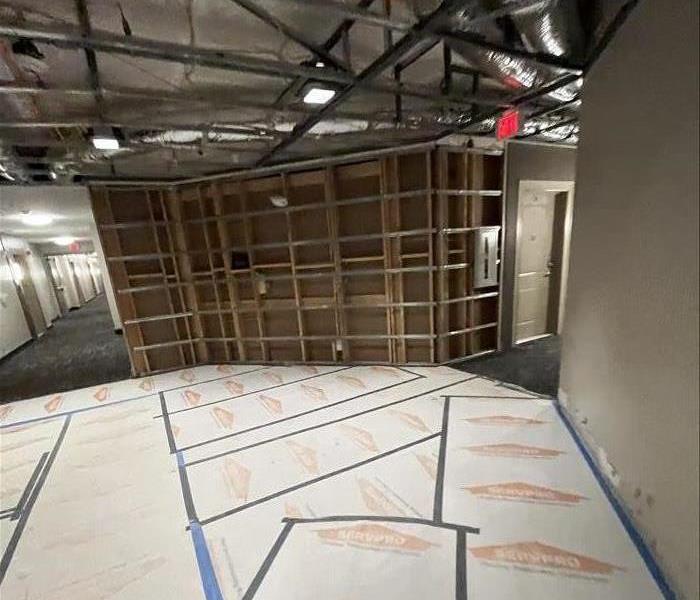 Explore the hazards of leaving appliances plugged in and unattended, provide expert insights, and offer practical tips on how to minimize these risks.
Explore the hazards of leaving appliances plugged in and unattended, provide expert insights, and offer practical tips on how to minimize these risks.
In today’s busy world, it’s easy to forget about an appliance you left plugged in or running while you step away. However, leaving appliances unattended in Providence, RI, can lead to unexpected dangers, including electrical fires. At SERVPRO®, we’ve seen the devastating effects that electrical fires can have on homes and businesses. In this blog, we’ll explore the hazards of leaving appliances plugged in and unattended, provide expert insights, and offer practical tips on how to minimize these risks.
Why Leaving Appliances Plugged in is Risky
Many household appliances are designed to make our lives easier, but when left plugged in or unattended, they can become fire hazards. Faulty wiring, power surges, or simply overheating can lead to electrical fires, which spread quickly if not caught in time. According to the National Fire Protection Association (NFPA), electrical fires caused by equipment or appliances are sometimes responsible for home fires, which have resulted in $1.5 billion in property damage in the past.
Common Appliances That Pose a Fire Hazard When Left Plugged In
While not every appliance in your home presents a significant fire risk, certain devices are more prone to causing problems if left unattended or plugged in. Here are some of the most common appliances that you should be cautious about:
- Space Heaters: Portable space heaters are a leading cause of house fires, especially when placed near flammable materials such as curtains, furniture, or bedding.
- Kitchen Appliances: Items like toasters, coffee makers, and ovens can easily overheat or short-circuit if left running without supervision.
- Clothes Dryers: Lint buildup in the dryer vent can quickly become a fire hazard if the appliance is left running and unattended.
- Hair Dryers and Straighteners: Personal care devices generate significant heat and can cause burns or fires if left plugged in.
- Phone Chargers: Although phone chargers may seem harmless, some can overheat and pose a risk of electrical fires if left plugged in for too long.
The Dangers of Power Surges and Overloaded Circuits
Another hazard of leaving appliances plugged in and unattended is the risk of power surges and overloaded circuits. Power surges, often caused by lightning strikes or fluctuations in the power grid, can damage appliances or cause electrical fires. Similarly, overloaded circuits occur when too many devices are plugged into a single outlet, causing excessive electrical current that can overheat wiring and lead to a fire.
To prevent these hazards, consider using surge protectors for sensitive electronics like computers, TVs, and gaming consoles. Additionally, avoid overloading outlets with multiple high-wattage appliances like space heaters and hairdryers. This simple precaution can go a long way in protecting your home from an electrical fire.
Fire Prevention Tips for Appliance Safety
The good news is that many of the hazards associated with leaving appliances plugged in and unattended can be prevented with some basic safety precautions. Here are expert tips to help reduce the risk of an appliance-related fire:
- Unplug Appliances When Not in Use: Always unplug appliances such as toasters, coffee makers, and space heaters when you’re finished using them. This eliminates the risk of overheating or short circuits while you’re away.
- Inspect Electrical Cords and Outlets: Regularly check your appliances for frayed or damaged cords, as these can easily spark a fire. If you notice any wear or tear, replace the cord or appliance immediately.
- Keep Flammable Materials Away: Ensure that appliances like space heaters and clothes dryers are positioned far from flammable objects such as curtains, papers, and clothing.
- Install Smoke Alarms: Make sure you have working smoke alarms installed throughout your home, especially in areas where appliances are frequently used, like the kitchen or laundry room.
- Use Timers for Appliances: If you need to leave an appliance running, such as a slow cooker, consider using a timer to automatically turn it off after a set period. This can prevent the appliance from overheating or running longer than necessary.
Why Routine Maintenance is Essential
One of the most effective ways to minimize the risk of appliance-related fires is to regularly maintain your appliances. This includes cleaning lint from your dryer’s vent system, inspecting your space heater for any signs of damage, and ensuring that your electrical outlets are in good condition. Regular maintenance helps prevent mechanical failures and keeps your appliances running safely.
Conclusion
Leaving appliances plugged in and unattended can lead to devastating consequences, including electrical fires that can spread rapidly throughout your home. By taking proactive steps such as unplugging unused appliances, inspecting cords for damage, and avoiding overloaded outlets, you can significantly reduce the risk of fire in your home. At SERVPRO, we’re Here to Help® you keep your property safe with expert fire damage restoration services and fire prevention advice.
Incorporating these safety practices into your daily routine can help protect your home from appliance-related fire hazards. For more tips on fire prevention or assistance with fire damage restoration, reach out to SERVPRO today!
The Hidden Dangers of Water Leaks in Older Homes
10/13/2024 (Permalink)
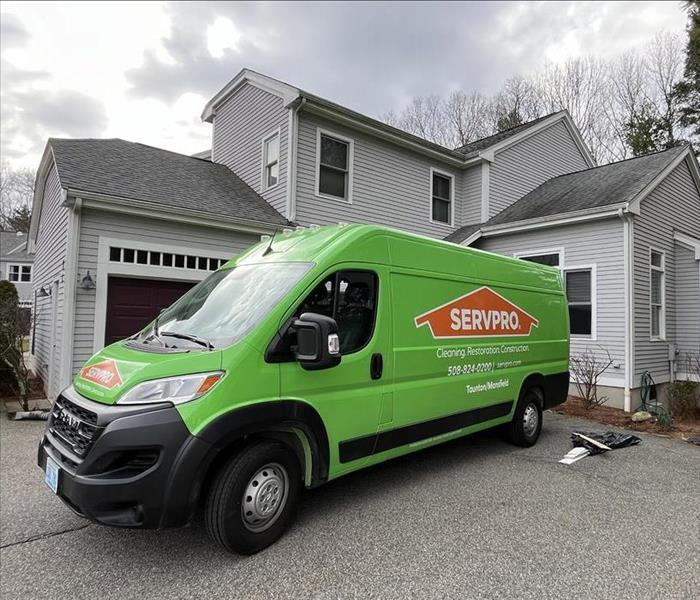 If you suspect a hidden water leak or need assistance with water damage restoration, contact SERVPRO of Providence.
If you suspect a hidden water leak or need assistance with water damage restoration, contact SERVPRO of Providence.
Older homes have a unique charm and character, but they also come with their own set of challenges. One of the most common issues homeowners in Providence, RI, face is hidden water leaks. These leaks can cause significant damage if not addressed quickly. In this blog, we’ll explore some of the common causes of hidden water leaks in older homes and provide some tips on how to detect and address them.
Aging Plumbing Systems
Older homes often have outdated plumbing systems. Pipes made of materials like galvanized steel or cast iron are prone to corrosion and rust over time. As these pipes deteriorate, they can develop small leaks that go unnoticed until significant damage occurs.
Tip: Regularly inspect visible pipes for signs of corrosion or rust. If your home has galvanized steel pipes, consider having them replaced with modern materials like copper or PEX.
Faulty Pipe Joints
In older homes, the joints where pipes connect can become loose or worn out over time. These joints are potential weak spots where leaks can occur, especially if the plumbing system has been subject to frequent temperature changes.
Tip: Have a professional plumber inspect your pipe joints for wear and tear. Tightening or replacing faulty joints can prevent leaks from developing.
Degraded Sealants and Caulking
Sealants and caulking around fixtures such as sinks, tubs, and toilets can degrade over time, allowing water to seep into walls and floors. This hidden water damage can lead to mold growth and structural issues if not addressed.
Tip: Check the sealants and caulking around your fixtures regularly. Replace any that appear cracked or degraded to prevent water seepage.
Roof Leaks
Older homes may have roofs that are past their prime, leading to leaks that allow water to seep into the attic and walls. These leaks can be particularly insidious because they are often only noticeable once significant damage has been done.
Tip: Inspect your roof regularly for missing shingles, cracks, or other signs of wear. Ensure gutters and downspouts are clear to prevent water from pooling on the roof.
Clogged Gutters and Downspouts
When gutters and downspouts are clogged with leaves and debris, water can overflow and seep into the foundation or walls of your home. This can cause hidden water damage that may not be immediately apparent.
Tip: Clean your gutters and downspouts regularly, especially during the fall when leaves are abundant. Installing gutter guards can also help prevent clogs.
Poor Drainage Systems
Older homes may have drainage systems that are not up to modern standards. Poor drainage can lead to water pooling around the foundation, which can seep into the basement or crawlspace, causing hidden water damage.
Tip: Ensure your home’s drainage system directs water away from the foundation. This may involve regrading your yard or installing French drains to improve water flow.
Hidden Leaks Behind Walls
Pipes running behind walls can develop slow leaks that are difficult to detect. These leaks can cause mold growth and damage to drywall and insulation over time.
Tip: Pay attention to signs of hidden leaks, such as musty odors, water stains on walls, or peeling paint. If you suspect a hidden leak, a professional plumber can use specialized equipment like moisture meters and thermal imaging cameras to locate the source.
Regular Inspections and Maintenance
Regular inspections and maintenance are crucial in older homes to prevent hidden water leaks. A proactive approach can save you time, money, and the headache of dealing with extensive water damage. According to the Environmental Protection Agency (EPA), 10% of homes have leaks that waste 90 gallons or more per day. Regular maintenance can significantly reduce this waste.
Keep Your Providence Home Safe and Dry
Hidden water leaks in older homes can cause significant damage if not addressed promptly. By understanding the common causes and taking proactive measures, you can protect your home from water damage. Regular inspections and quick repairs are key to maintaining your home’s plumbing system.
If you suspect a hidden water leak or need assistance with water damage restoration, contact SERVPRO of Providence. Our experienced professionals are Here to Help® you keep your home safe and dry.
Mold in Drywall: Identification and Repair Tips from SERVPRO®
9/16/2024 (Permalink)
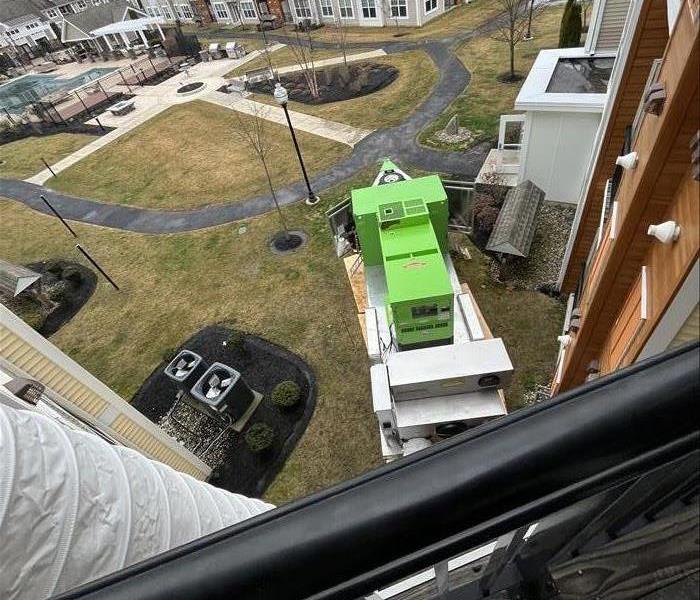 This guide will walk you through how to detect mold in drywall and provide expert tips for proper remediation.
This guide will walk you through how to detect mold in drywall and provide expert tips for proper remediation.
Mold is a common issue that can compromise the structural integrity of your home in Providence, RI, especially when it infiltrates drywall. For homeowners and business owners alike, identifying and addressing mold in drywall early can save you time, money, and stress. This guide will walk you through how to detect mold in drywall, provide expert tips for proper remediation, and offer insights into why professional intervention is often the best choice.
How to Identify Mold in Drywall
Knowing how to spot mold in drywall is critical. Mold typically grows in areas with high moisture or humidity, such as basements, bathrooms, or kitchens. Unfortunately, drywall's porous nature makes it an ideal surface for mold spores to settle and grow, often unnoticed. Here are some signs that you might have mold growing within your drywall:
- Discoloration: Mold can appear as dark or greenish stains on the surface of the drywall. Often mistaken for dirt or shadows, these spots may gradually increase in size over time.
- Musty Odor: A persistent musty smell can be an indicator of hidden mold within the drywall.
- Bulging or Warping: As mold thrives on moisture, the drywall may begin to warp, bubble, or bulge.
- Visible Mold Growth: In advanced cases, mold might appear as fuzzy or slimy patches on the surface of the drywall.
- Water Damage: Areas of drywall that have suffered water damage are prime spots for mold growth. If the drywall has experienced flooding, leaking, or high humidity, mold could soon follow.
These signs may not always be obvious, which is why early detection and intervention are key to preventing extensive damage.
Common Causes of Mold in Drywall
Understanding what causes mold in drywall can help you prevent it from spreading further. Some of the most common reasons mold appears in drywall include:
- Leaking Pipes: Leaks behind walls or ceilings can go unnoticed for long periods, leading to moisture buildup that fosters mold.
- Roof Leaks: A leaking roof can drip into walls, creating prime conditions for mold to grow in drywall.
- Humidity and Poor Ventilation: High humidity levels, especially in areas like bathrooms or basements, can allow mold to thrive.
- Flooding or Water Damage: Flooded drywall or rooms with frequent water damage often develop mold if not dried quickly.
According to the Environmental Protection Agency (EPA), the presence of moisture for 24-48 hours can be enough for mold to begin growing on surfaces like drywall. Learn more about mold growth from the EPA.
Expert Tips for Repairing Mold-Damaged Drywall
Once you’ve identified mold in your drywall, it’s essential to handle the situation swiftly and correctly. The process of repairing mold-damaged drywall involves the following steps:
- Stop the Source of Moisture: Whether it’s a leaking pipe, roof, or poor ventilation, stop the source of moisture before you begin any mold remediation. Otherwise, mold will continue to grow.
- Remove Affected Drywall: Cut out and discard any moldy sections of drywall. It's often best to remove at least 12-18 inches beyond the visible mold to ensure all contaminated material is gone.
- Disinfect the Area: Once the moldy drywall is removed, clean and disinfect the underlying surfaces. Use an antimicrobial cleaner specifically designed for mold.
- Install New Drywall: After removing mold-damaged sections and disinfecting the area, install new drywall. Make sure it is properly sealed to prevent future moisture infiltration.
- Ensure Proper Ventilation: After replacing the drywall, ensure the area is well-ventilated. Installing proper ventilation or dehumidifiers in high-humidity areas can help prevent mold from returning.
While minor cases of mold in drywall can sometimes be handled by the homeowner, larger infestations often require professional intervention. Mold can easily spread to other areas, making it difficult to manage without the right equipment and expertise.
Why Choose SERVPRO® for Mold Remediation?
Mold remediation requires specialized knowledge and equipment to ensure that the problem is fully eradicated. SERVPRO offers professional mold removal and drywall repair services, making sure the job is done right the first time.
SERVPRO’s team of certified technicians uses advanced techniques to safely remove mold from your drywall and restore your property to its pre-damage condition. With industry-leading equipment and a commitment to excellent service, SERVPRO is a trusted partner for homeowners and business owners dealing with mold problems.
Preventing Future Mold Growth in Drywall
After mold remediation, prevention is key to avoiding a recurrence. Here are a few proactive steps you can take:
- Fix Leaks Immediately: Address any plumbing or roofing issues as soon as they arise.
- Use Dehumidifiers: Keep humidity levels below 60% in your home, especially in basements or bathrooms.
- Ventilate: Make sure high-moisture areas are well-ventilated, especially after showers or baths.
- Regular Inspections: Regularly inspect your home for signs of water damage or leaks, especially in humid areas.
Conclusion
Mold in drywall is a common but serious issue that requires timely identification and professional remediation. Whether it’s water damage, humidity, or hidden leaks, understanding the causes and symptoms of mold can help you address the problem quickly. For expert drywall mold removal, SERVPRO provides reliable, effective solutions, ensuring your home or business stays mold-free.
Preventing mold growth through regular inspections and proper moisture control is the best way to keep your drywall in good condition for years to come. Trust SERVPRO for expert mold identification, repair, and prevention strategies.
After the Storm: Assessing Tree Damage in the Northeast
9/11/2024 (Permalink)
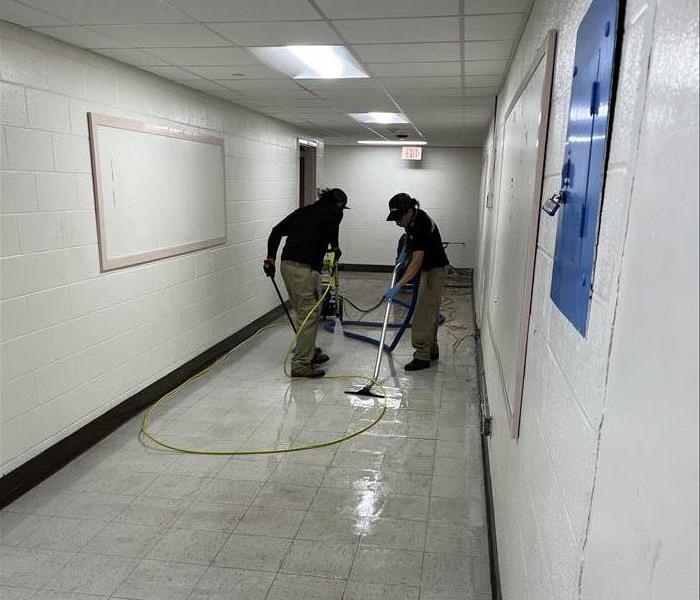 This guide will help you understand the importance of assessing tree damage in the Northeast, with a focus on Rhode Island.
This guide will help you understand the importance of assessing tree damage in the Northeast, with a focus on Rhode Island.
Storms can leave a significant impact on the Providence, RI, landscape, particularly on the trees that provide shade, beauty, and ecological benefits. After a storm, assessing tree damage is crucial to ensure safety and decide on the next steps for tree care and property recovery. This guide will help you understand the importance of assessing tree damage in the Northeast, with a focus on Rhode Island.
Understanding Tree Damage
Storms can inflict various types of damage on trees, including broken branches, split trunks, and even uprooted trees. High winds, heavy rain, and ice can all contribute to the weakening of a tree's structure. It's essential to recognize the signs of damage early to prevent potential hazards such as falling branches or trees, which can cause property damage or personal injury.
Common Types of Tree Damage
- Broken Branches: High winds can break branches, leaving hanging limbs that are hazardous.
- Split Trunks: Severe storms may cause trunks to split, which can compromise the tree’s stability.
- Uprooted Trees: Saturated soil combined with strong winds can result in trees being uprooted.
- Crown Twist: Winds can twist the crown of the tree, causing internal damage that's not immediately visible.
Assessing Tree Damage in Rhode Island
In Rhode Island, tree damage from storms is a common issue. A study by the Rhode Island Department of Environmental Management noted that over 60 percent of the state’s trees experienced some form of damage during significant storm events over the past decade. This statistic highlights the importance of post-storm assessments to maintain the health and safety of the state's green canopy.
Steps to Assess Tree Damage
- Initial Inspection: Start with a visual inspection from a distance to identify any obvious signs of damage such as broken branches or leaning trees.
- Close-up Examination: Get closer to check for cracks in the trunk, exposed roots, and other subtle damages.
- Check Surroundings: Assess the surrounding area for damaged power lines, structures, or other hazards that the tree might affect.
- Professional Help: For severe damage, it’s best to consult a professional arborist who can provide a detailed assessment and recommend the best course of action.
Preventative Measures
While it's impossible to prevent all storm damage, regular tree maintenance can reduce the risk. Pruning dead or weak branches, ensuring the tree is healthy, and planting trees in suitable locations can help them withstand severe weather better.
Conclusion
Assessing tree damage after a storm is vital for the safety and health of your property and the community. By understanding the types of damage and taking the appropriate steps to assess and address it, you can help preserve the beauty and benefits of the trees in the Northeast. For extensive damage, always consider contacting professionals like SERVPRO® for expert assistance and restoration services.
Ensuring the health of your trees not only enhances your property’s aesthetics but also contributes to the overall well-being of the environment. Stay vigilant, stay safe, and take proactive steps to protect your trees after the storm.
Protecting Your Pets from Home Fires: Essential Tips for Safety
8/14/2024 (Permalink)
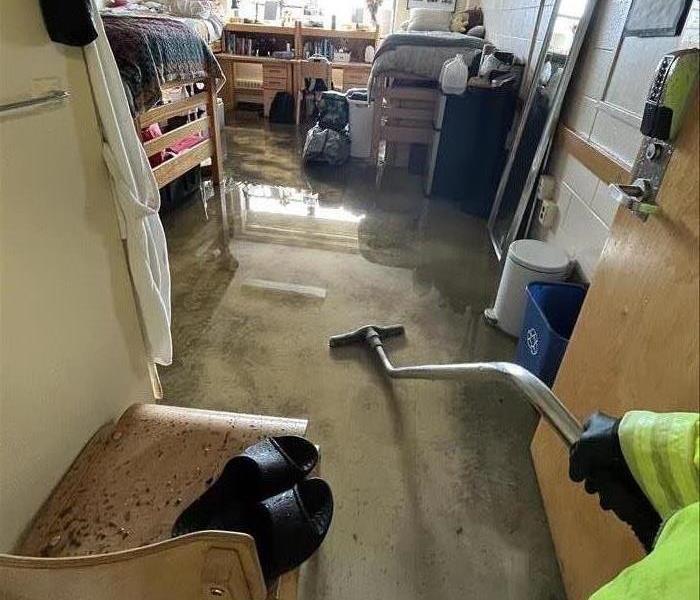 We provide you with practical tips and strategies to protect your pets from home fires.
We provide you with practical tips and strategies to protect your pets from home fires.
Home fires in Providence, RI, can be devastating, not just for humans but also for our beloved pets. Ensuring the safety of pets in case of a fire is a crucial aspect of emergency preparedness. In this blog, we will provide you with practical tips and strategies to protect your pets from home fires.
Understanding the Risk of Home Fires
Home fires can occur unexpectedly and spread rapidly, posing a significant threat to all household members, including pets. According to the National Fire Protection Association (NFPA), pets or wild animals are responsible for starting nearly 1,000 home fires each year. Being proactive in fire prevention and preparation is essential to safeguard your furry friends.
Fire Prevention Tips for Pet Owners
Pet-Proofing Your Home
One of the first steps in fire prevention is pet-proofing your home. Ensure that potential fire hazards are out of your pet's reach. This includes:
- Keeping electrical cords secure and away from chewing.
- Use flameless candles instead of traditional ones.
- Storing flammable materials in secure locations.
Installing Smoke Detectors
Smoke detectors are a vital tool in fire safety. Make sure you have working smoke detectors installed on every level of your home and test them regularly. Consider using monitored smoke detectors, which are connected to a monitoring center that can alert emergency services even when you’re not home.
Creating a Pet Emergency Plan
Identifying Safe Areas
Designate a safe area in your home where your pets can be quickly and easily confined in case of an emergency. This area should be free of potential fire hazards and easily accessible for firefighters.
Practicing Evacuation Drills
Regularly practicing evacuation drills with your pets can help ensure a swift and safe exit during a fire. Train your pets to come when called and use leashes or carriers to guide them to safety. Familiarize them with the sound of smoke alarms so they are less likely to be frightened in an actual emergency.
What to Do During a Fire
Quick Action Steps
If a fire breaks out, prioritize your safety and that of your pets:
- Alert everyone in the household and follow your evacuation plan.
- Use leashes or carriers to secure pets and lead them to safety.
- Never re-enter a burning building to save pets. Inform firefighters about the pets' location.
After the Fire: Caring for Your Pets
After a fire, your pets may be disoriented and stressed. Provide a calm environment and seek veterinary care if needed. Check your home for any lingering hazards before allowing your pets to return.
Protecting your pets from home fires involves a combination of prevention, preparation, and quick action. By following these tips, you can ensure the safety and well-being of your furry family members in the event of a fire. Stay prepared, stay safe, and keep your pets protected.
By incorporating these strategies, you can minimize the risk of home fires and ensure that your pets remain safe. Remember, preparation is key to keeping everyone, including your pets, out of harm's way.
For more information on fire safety and restoration services, visit SERVPRO® today.
Keeping Your Crawl Space Mold-Free: Prevention and Remediation Tips
7/10/2024 (Permalink)
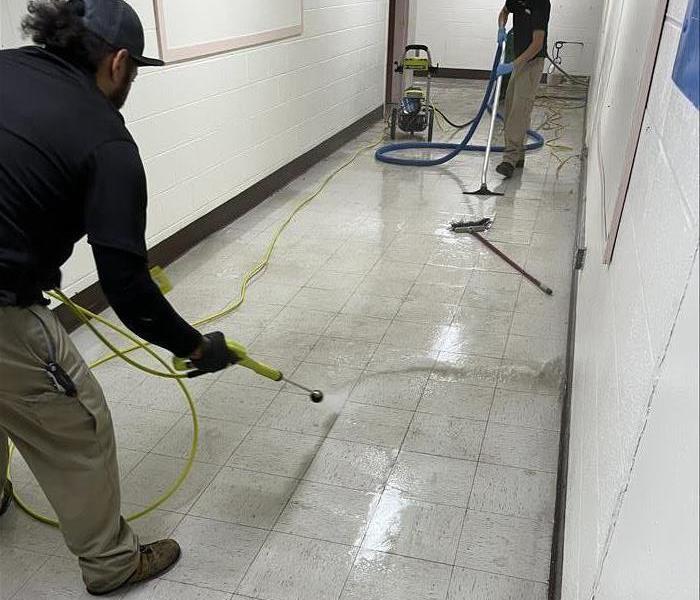 We discuss the causes of mold in crawl spaces and provide practical tips for prevention and remediation.
We discuss the causes of mold in crawl spaces and provide practical tips for prevention and remediation.
Mold growth in crawl spaces is a common problem faced by homeowners, and if left unchecked, it can lead to structural damage and affect indoor air quality. Understanding how mold develops in crawl spaces and implementing preventive measures can help you maintain a clean and healthy home environment. In this blog post, we'll discuss the causes of mold in crawl spaces and provide practical tips for prevention and remediation.
Causes of Mold in Crawl Spaces
Moisture Accumulation
Crawl spaces are prone to moisture buildup due to their proximity to the ground. Factors such as poor ventilation, groundwater seepage, and plumbing leaks can contribute to excess moisture in the crawl space, creating an ideal environment for mold growth.
Poor Insulation
Inadequate insulation in the crawl space can lead to temperature fluctuations and condensation, promoting mold growth. Without proper insulation, cold surfaces can attract moisture from the air, providing a breeding ground for mold spores.
Organic Material
Organic materials such as wood, insulation, and debris found in crawl spaces serve as food sources for mold. As these materials become damp, they provide nutrients for mold growth, exacerbating the problem.
Prevention Tips for Mold in Crawl Spaces
Ensure Proper Ventilation
Proper ventilation is essential for reducing moisture buildup in the crawl space. Installing vents and fans can help promote airflow and prevent stagnant air from accumulating moisture.
Maintain Gutters and Downspouts
Keep gutters and downspouts clean and free of debris to prevent water from pooling around the foundation of your home. Proper drainage will help divert water away from the crawl space, reducing the risk of moisture infiltration.
Seal Cracks and Gaps
Sealing cracks and gaps in the crawl space walls and foundation can prevent moisture from entering. Use caulk or foam insulation to seal any openings, including around pipes, vents, and utility penetrations.
Remediation Techniques for Mold in Crawl Spaces
Professional Inspection
If you suspect mold growth in your crawl space, it's essential to schedule a professional inspection. Trained technicians can assess the extent of the mold problem and recommend appropriate remediation measures.
Mold Removal
Professional mold remediation involves thorough cleaning and removal of mold-contaminated materials. Specialized equipment and techniques are used to ensure effective mold removal while minimizing the spread of spores.
Addressing underlying moisture issues is crucial for preventing mold recurrence. Implementing moisture control measures such as installing vapor barriers and dehumidifiers can help maintain a dry and mold-free crawl space.
Preventing and remedying mold growth in crawl spaces requires proactive measures and professional expertise. By addressing moisture issues, ensuring proper ventilation, and conducting regular inspections, you can keep your crawl space clean and mold-free. If you need assistance with mold remediation, don't hesitate to contact a professional restoration company like SERVPRO® for expert help.
Documenting Water Damage: A Crucial Step for Insurance Claims
6/14/2024 (Permalink)
Water damage can wreak havoc on homes and properties, causing extensive damage to structures, belongings, and personal possessions. In the aftermath of a water-related incident, documenting the damage thoroughly is essential for filing insurance claims and ensuring fair compensation for repairs and restoration. In this blog, we'll explore the importance of documenting water damage for insurance claims and discuss the steps homeowners can take to streamline the claims process and maximize their coverage.
Establishing the Extent of Damage
Documenting water damage provides clear evidence of the extent of the damage sustained by the property. By thoroughly documenting all affected areas, including structural damage, flooring, walls, and personal belongings, homeowners can provide insurers with a comprehensive overview of the damage incurred. This information is crucial for accurately assessing the scope of the claim and determining the appropriate coverage for repairs and restoration.
Supporting Insurance Claims
Insurance companies require evidence to support claims for water damage coverage. Documentation such as photographs, videos, and written descriptions of the damage serve as tangible evidence of the loss incurred by the homeowner. Detailed documentation helps substantiate the validity of the claim and expedites the claims process by providing insurers with the information they need to assess the damage and determine coverage.
Facilitating Claims Processing
Thorough documentation of water damage streamlines the claims process, reducing delays and ensuring prompt resolution of claims. By providing insurers with detailed documentation upfront, homeowners can expedite the claims processing timeline and receive compensation more quickly. Timely resolution of insurance claims enables homeowners to initiate repairs and restoration promptly, minimizing further damage and disruption to their lives.
Maximizing Insurance Coverage
Documenting water damage thoroughly helps homeowners maximize their insurance coverage by ensuring that all eligible damage is accounted for in the claim. By documenting both visible and hidden damage, homeowners can avoid overlooking potential sources of coverage and ensure that they receive fair compensation for all aspects of the damage incurred. Maximized insurance coverage allows homeowners to address all necessary repairs and restoration without incurring undue financial burden.
Providing Documentation for Restoration
In addition to supporting insurance claims, documentation of water damage serves as valuable information for restoration contractors tasked with repairing the property. Detailed documentation helps restoration professionals assess the extent of the damage and develop comprehensive restoration plans tailored to the specific needs of the property. This ensures that repairs are conducted efficiently and effectively, restoring the property to its preloss condition.
Documenting water damage is a critical step for homeowners seeking insurance coverage for repairs and restoration. Thorough documentation establishes the extent of the damage, supports insurance claims, facilitates claims processing, maximizes insurance coverage, and provides valuable information for restoration efforts. By documenting water damage meticulously, homeowners can streamline the claims process, maximize their coverage, and expedite the restoration of their property following a water-related incident.
Navigating Spring Storms: A Guide to Preparing Your Car in the Northeast
5/12/2024 (Permalink)
As winter bids farewell to the Northeast, spring brings not only the promise of blooming flowers but also the potential for unpredictable weather. From sudden rain showers to lingering snowstorms, springtime can present unique challenges for drivers. To ensure you're well-prepared for whatever Mother Nature throws your way, here's a comprehensive guide on how to prepare your car for spring storms in the Northeast.
Check Your Tires
The transition from winter to spring often means navigating wet and slippery roads. Ensure your tires have sufficient tread depth and are properly inflated. Consider switching to all-season or summer tires if you've been using winter ones.
Frequent temperature fluctuations can take a toll on your car's brakes and suspension. Have a professional inspect and, if necessary, replace brake pads and rotors. Check for any signs of wear or damage to the suspension components.
Top off Fluids
Spring storms often bring with them varying road conditions. Ensure your car's essential fluids—engine oil, transmission fluid, brake fluid, and windshield washer fluid—are at their proper levels. Consider a windshield washer fluid with a de-icing component.
Spring storms can reduce visibility, especially during heavy rainfall. Check all exterior lights, including headlights, taillights, brake lights, and turn signals. Replace any bulbs that are dim or burnt out.
Inspect Wipers and Wiper Fluid
Visibility is crucial in inclement weather. Inspect your windshield wipers for wear and tear, and replace them if necessary. Ensure your wiper fluid is filled with a solution that effectively removes dirt and grime.
Cold winter temperatures can strain your car's battery. Have it tested to ensure it's holding a charge effectively. Clean any corrosion from the terminals and make sure the battery is securely mounted.
Check the Cooling System
As temperatures rise, your car's cooling system becomes crucial. Ensure the radiator and hoses are in good condition, and the coolant levels are appropriate. A well-functioning cooling system prevents your engine from overheating.
Temperature fluctuations can affect the integrity of belts and chains in your car. Check for any signs of wear, cracks, or fraying. Replace them if necessary to avoid breakdowns.
Prepare an Emergency Kit
Spring storms can bring unexpected challenges. Pack an emergency kit that includes essentials like a flashlight, first aid supplies, blankets, non-perishable snacks, and a portable phone charger. Be prepared for unexpected delays.
Ensure your auto insurance coverage is up-to-date and includes protection against weather-related damages. Confirm that your policy covers any potential storm-related incidents.
Review Your Traction Control System
Spring storms can create slippery driving conditions. If your vehicle is equipped with a traction control system, ensure it's functioning correctly. If you have snow chains, consider keeping them in your trunk for added traction in unexpected snowfall.
Winter conditions can accelerate the wear and tear on your exhaust system. Inspect it for any leaks, damage, or rust. A well-maintained exhaust system is essential for fuel efficiency and overall vehicle performance.
Clean and Wax Your Car
Winter road salt and debris can take a toll on your car's exterior. Give your vehicle a thorough wash and wax to protect the paint and ensure a clear line of sight for sensors and cameras.
Keep an eye on weather forecasts, especially if you're planning a road trip. Stay informed about potential storms and road conditions, and adjust your travel plans accordingly.
By taking these proactive measures, you'll not only enhance the safety and performance of your vehicle but also ensure a smoother transition into the unpredictable weather that spring can bring to the Northeast. Remember, preparation is the key to a stress-free and safe driving experience.
The impact of wildfires on air quality and respiratory health
4/19/2024 (Permalink)
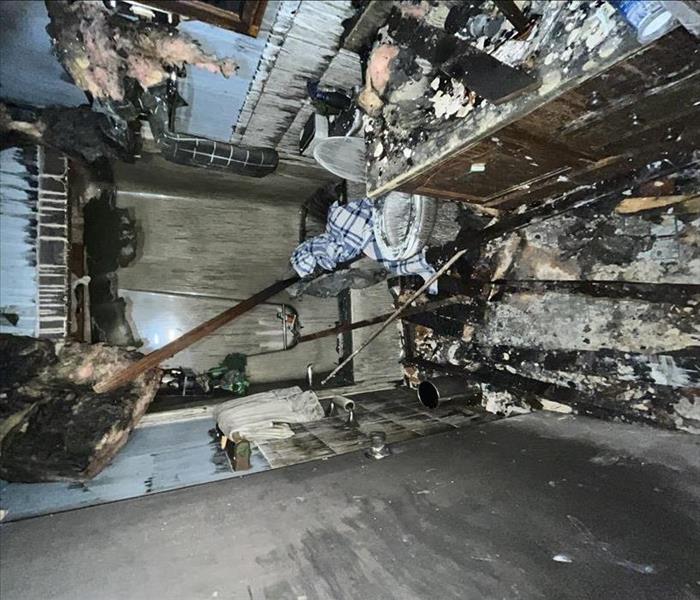 SERVPRO is ready to respond to your fire damage emergency day or night!
SERVPRO is ready to respond to your fire damage emergency day or night!
As we witness an increase in the frequency and intensity of wildfires, it becomes crucial to address the far-reaching consequences on air quality and, subsequently, respiratory health. At SERVPRO®, we understand the importance of a safe and healthy living environment. In this blog post, we'll explore the impact of wildfires on air quality and offer practical tips to protect your home and well-being.
Understanding the Threat
Wildfires release a myriad of pollutants into the air, including particulate matter, carbon monoxide, and volatile organic compounds. These airborne contaminants can infiltrate your home, compromising indoor air quality and posing significant risks to respiratory health. Individuals with pre-existing conditions such as asthma, allergies, or chronic respiratory diseases are especially vulnerable. Now let’s discuss how to protect your indoor space.
Seal Entry Points
Ensure that windows and doors are tightly sealed to prevent outdoor pollutants from entering your home. Use weather stripping and caulk to seal any gaps.
Invest in Air Purifiers
Consider using HEPA air purifiers to filter out fine particles and contaminants. These devices can significantly improve indoor air quality, creating a safer environment for you and your family.
Proactive Cleaning
Regularly clean and dust surfaces to minimize the accumulation of particles. SERVPRO® offers professional cleaning services to thoroughly address the aftermath of wildfire-related contamination.
Stay Informed
Monitor air quality indexes in your area and stay updated on wildfire forecasts. This information will help you make informed decisions to protect your home and family.
Let’s dive into some respiratory health tips now that we’ve covered the basics.
Use N95 Masks
If you need to go outdoors during wildfire incidents, wear N95 masks to reduce the inhalation of harmful particles.
Stay Hydrated
Adequate hydration helps your body flush out toxins and supports overall respiratory health. Drink plenty of water, especially during periods of poor air quality.
Create a Clean Room
Designate a room in your home as a clean space with minimal outdoor air infiltration. Use air purifiers in this room for added protection.
As wildfires become a more common occurrence, taking proactive measures to protect your indoor air quality is paramount. SERVPRO is committed to assisting you in maintaining a healthy living environment. By following these tips, you can safeguard your home and respiratory health against the impact of wildfires. For professional cleaning and restoration services, trust the experts at SERVPRO to help you breathe easier in the face of environmental challenges.
Navigating Mold in HVAC Ducts: Unraveling Causes and Effective Solutions
3/14/2024 (Permalink)
Your HVAC (Heating, Ventilation, and Air Conditioning) system is a critical component of your home's comfort. However, when mold infiltrates its ductwork, it can impact both the efficiency of the system and the overall indoor environment. In this blog, we'll explore the causes of mold in HVAC ducts and offer practical solutions to address and prevent this unwelcome intruders.
Condensation Conundrum
One common cause of mold in HVAC ducts is condensation. When warm air meets cool surfaces within the ductwork, moisture can accumulate, providing an ideal environment for mold growth. Elevated humidity levels in your home can contribute to mold formation in HVAC ducts. Proper humidity control is essential to prevent excess moisture that can fuel mold growth.
Leaky Ducts Spell Trouble
Ductwork leaks are another culprit for mold infestations. Moisture from leaks can accumulate, creating pockets of dampness that encourage mold to thrive. Poor ventilation in the HVAC system can lead to stagnant air, creating conditions conducive to mold growth. Ensuring proper airflow is crucial for preventing mold in ducts. The design of your HVAC ducts can influence mold growth. If the ducts have bends or areas with restricted airflow, moisture can accumulate, providing a breeding ground for mold.
Outdoor Humidity Infiltration
High humidity levels in the outdoor air can infiltrate your HVAC system. When this moisture meets the cool surfaces of the ductwork, it creates an environment ripe for mold growth. Inadequate or damaged insulation in HVAC ducts can contribute to temperature differentials that lead to condensation. Proper insulation is crucial for preventing mold-friendly conditions.
Improperly Sized HVAC System
An HVAC system that is too large or too small for your home's needs can result in uneven cooling and heating. This imbalance can lead to temperature variations that encourage mold growth. Regular maintenance is vital for preventing mold in HVAC ducts. Neglected systems are more prone to issues like leaks, condensation, and other factors that foster mold development.
Insufficient Air Filtration
Inadequate air filtration can allow dust and debris to accumulate in the ducts. When combined with moisture, this provides an ideal environment for mold growth.
Effective Solutions
- Regular HVAC Inspections:
Schedule routine inspections of your HVAC system to identify and address potential issues before they escalate.
- Maintain Optimal Humidity Levels:
Control indoor humidity levels to prevent excess moisture in the air. Consider using dehumidifiers in areas prone to humidity fluctuations.
- Seal and Insulate Ductwork:
Ensure that ductwork is properly sealed and insulated to prevent temperature differentials and condensation.
- Invest in Proper Ventilation:
Upgrade your HVAC system with proper ventilation components to promote adequate airflow and reduce the risk of stagnant air.
Act promptly to repair any leaks in the ductwork. Timely repairs prevent the accumulation of moisture that encourages mold growth.
- Install High-Quality Air Filters:
Choose high-quality air filters for your HVAC system to trap dust and debris, preventing them from settling in the ducts.
- Regular System Maintenance:
Stay proactive with regular maintenance, including cleaning, inspection, and component checks to keep your HVAC system in optimal condition.
Understanding the causes and implementing effective solutions is crucial in fortifying your HVAC system against mold growth. By taking proactive measures and addressing potential issues promptly, you ensure the efficiency of your HVAC system and maintain a mold-resistant environment within your home. Regular inspections, proper ventilation, and adequate moisture control are the pillars of a resilient HVAC system, providing comfort and peace of mind for years to come.
 Explore the hazards of leaving appliances plugged in and unattended, provide expert insights, and offer practical tips on how to minimize these risks.
Explore the hazards of leaving appliances plugged in and unattended, provide expert insights, and offer practical tips on how to minimize these risks.






 24/7 Emergency Service
24/7 Emergency Service





